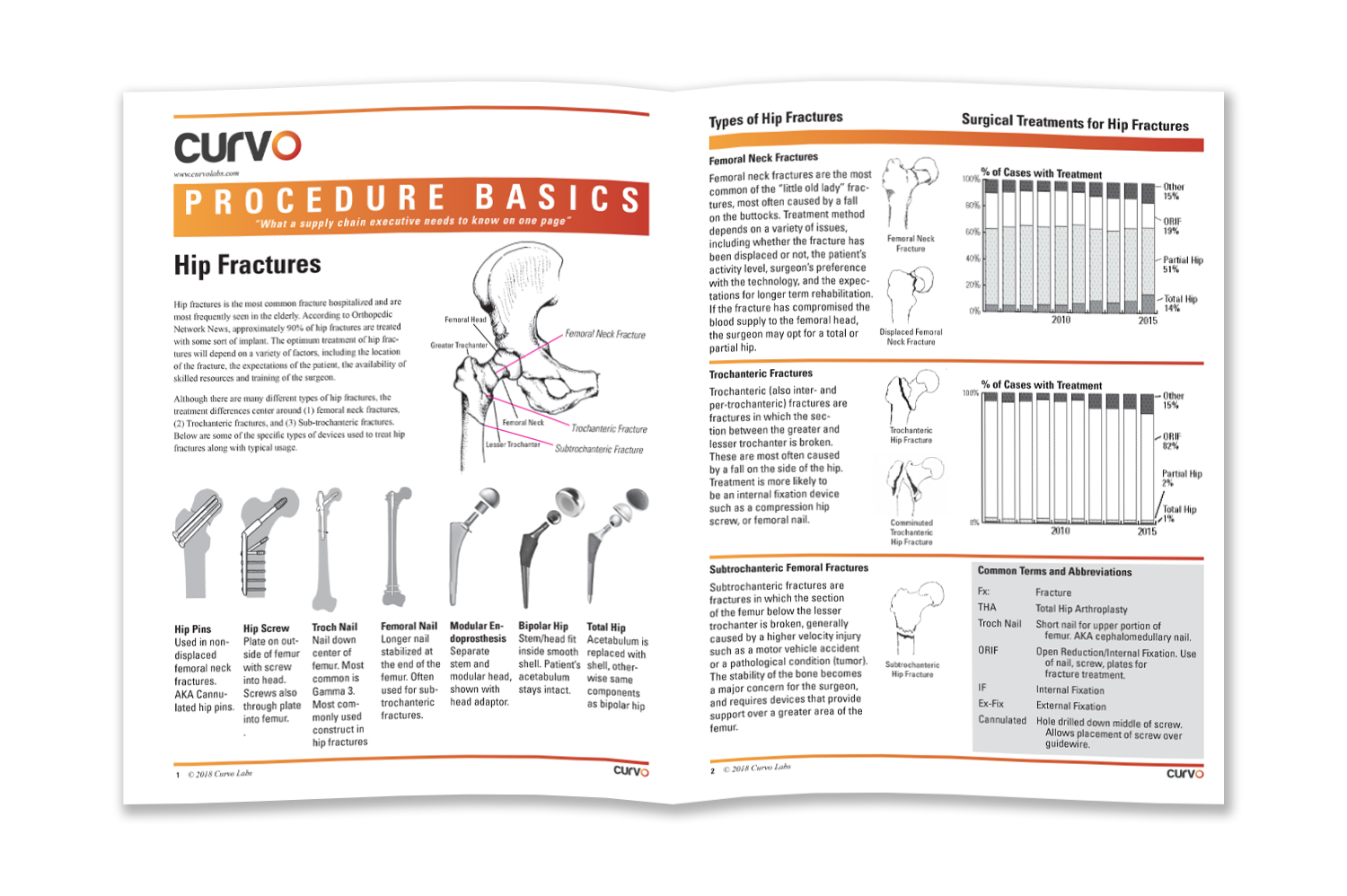
Hip fractures are the most common hospitalized fracture and are most frequently seen in the elderly. According to Orthopedic Network News, approximately 90% of hip fractures are treated with some sort of implant. The optimum treatment of hip fractures will depend on a variety of factors, including the location of the fracture, the expectations of the patient, the availability of skilled resources, and training of the surgeon.
Different Types of Hip Fractures and Their Treatments
Although there are many different types of hip fractures, the treatment differences center around (1) femoral neck fractures, (2) trochanteric fractures, and (3) sub-trochanteric fractures. Below are some of the specific types of devices used to treat hip fractures, along with typical usage.
Hip Pins
Used in non-displaced femoral neck fractures.
AKA Cannulated hip pins.
Hip Screw
Plate on outside of femur with screw into head. Screws also through plate into femur.
Troch Nail
Nail down center of femur. Most common is Gamma 3. Most commonly used construct in hip fractures.
Femoral Nail
Longer nail stabilized at the end of the femur. Often used for subtrochanteric fractures.
Modular Endoprosthesis
Separate stem and modular head, shown with head adaptor.
Bipolar Hip
Stem/head fit inside smooth shell. Patient’s acetabulum stays intact.
Total Hip
Acetabulum is replaced with shell, otherwise same components as bipolar hip.
Other Kinds of Fractures
Femoral Neck Fractures
Femoral neck fractures are the most common of the “little old lady” fractures, most often caused by a fall on the buttocks. Treatment method depends on a variety of issues, including whether the fracture has been displaced or not, the patient’s activity level, surgeon’s preference with the technology, and the expectations for longer term rehabilitation. If the fracture has compromised the blood supply to the femoral head, the surgeon may opt for a total or partial hip.
Trochanteric Fractures
Trochanteric (also inter- and per-trochanteric) fractures are fractures in which the section between the greater and lesser trochanter is broken. These are most often caused by a fall on the side of the hip. Treatment is more likely to be an internal fixation device such as a compression hip screw, or femoral nail.
Subtrochanteric Femoral Fractures
Subtrochanteric fractures are fractures in which the section of the femur below the lesser trochanter is broken, generally caused by a higher velocity injury such as a motor vehicle accident or a pathological condition (tumor). The stability of the bone becomes a major concern for the surgeon, and requires devices that provide support over a greater area of the femur.
Common Terms and Abbreviations
- Fx: Fracture
- THA: Total Hip Arthroplasty
- Troch Nail: Short nail for upper portion of
femur. AKA cephalomedullary nail. - ORIF: Open Reduction/Internal Fixation. Use of nail, screw, plates for fracture treatment.
- IF: Internal Fixation
- Ex-Fix: External Fixation
- Cannulated: Hole drilled down middle of screw. Allows placement of screw over guidewire.
Get the full Procedure Brief on Hip Fractures.

